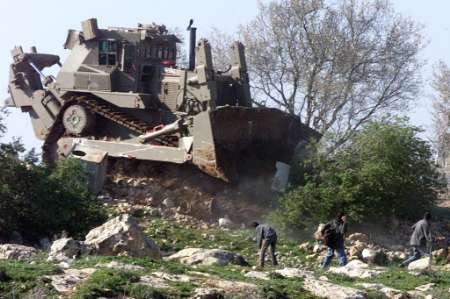While Palestinian school pupils make nearly 42 percent of the pupils in the whole of the Jerusalem education system, they receive little more than 20 percent of the education budget (this figure is provided by the official statistics: the real amount of money that ends up in the hands of the Palestinian schools is even smaller than that). As a result, the infrastructure is hazardous and studying conditions are unbearable in many of the schools. About 18,000 Palestinian children of school age have dropped out of the education system. About 14,500 pupils in East Jerusalem are unknown to the Israeli authorities. The Palestinian curriculum is different from the Israeli schooling system and prevents integration of the Palestinian students in Israeli society, higher education and the job market. This policy goes hand in hand with the policy that prevents residents of East Jerusalem from obtaining Israeli citizenship.
Following the 1967 War, Israel annexed to the municipal boundaries of West Jerusalem some 70 sq. km, about 12% of the West Bank. This area includes the municipality of East Jerusalem, which was 6 sq. km. and had been under Jordanian rule. Although the international community has never recognized the annexation, Israel treats this area as an integral part of the country. (8
Since 1967, Palestinian residents of East Jerusalem are granted permanent residency status. This special status prevents them from having full citizenship rights, such as the right to vote in national elections, but it does entitle them to social benefits provided by the National Insurance Institute and to health insurance, as well as the right to work in Israel without the necessity of special permits. This partial status holds also for children of Palestinian residents who were born inside the State of Israel. Of course, Jews who moved to settlements that were built on expropriated lands have not lost their Israeli citizenship.
Preventing Palestinian residents of Jerusalem from acquiring Israeli citizenship plugs into the “demographic problem” discourse in Israel and exemplifies the avowed effort of Zionist parties in the Knesset to maintain the Jewish majority of the city’s population. In reference to the future boundaries of the city, Uri Lupolianski, the mayor of Jerusalem, said: “I will not go into details about the border line. Let’s say it will be based on the maximum number of Jews and the minimum number of Arabs within the State of Israel.”
Under the Compulsory Education Law and Compulsory Free Education Law, the State of Israel and the Jerusalem Municipality are required to provide free public education for all Palestinian children in East Jerusalem, as to all residents of Israel.The Israeli school system is divided into "sectors": secular-Jewish, religious Jewish, ultra-ortodox, and Palestinian.

Nessun commento:
Posta un commento